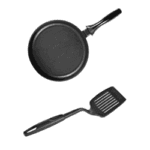Ask anyone what fluoropolymers are, and they wouldn’t be aware. However, replace that with ‘Teflon’, and most people think of the material that keeps food from sticking to pans.
What may actually come off as surprising is that Teflon isn’t the only fluoropolymer there is. There are several different types of fluoropolymers, PTFE and PFA being among the most popular ones.
Perfluoroalkoxy (PFA Tubing)
PFA tubing has quite similar properties to PTFE tubing, which is a widely used form of Teflon. The primary difference between both the fluoropolymers is that PFA can be melted and processed. This can be done through traditional mold injections or other techniques.
Due to its significant chemical inertness properties, flexibility and transparency, PFA is used as a tubing option for corrosive substances and handling critical procedures. PFA tubing is also used in the form of sheet linings for chemical processing equipment.
Polytetrafluoroethylene (PTFE Tubing)
PTFE is a synthesized polymer that most people know as Teflon. It is a fluorocarbon compound which was accidentally discovered by Roy Plunkett. The standout feature of PTFE is that it is hydrophobic.
This means water and other materials cannot stick to it. The high electronegativity of fluorine also makes up for a significantly low coefficient of friction.
PTFE is largely used as a non-stick coating for cookware alongside as a coating for pipes and tubes that transport reactive materials. PTFE may also be used as lubricant in machinery to minimize erosion of solid parts working together.
The Differences
When it comes to tubing, PFA is considered superior to PTFE due to its flexibility. However, PFA has a shorter flex life than PTFE. PFA maintains a transparency under extreme temperatures of up to 500 degree Fahrenheit, while PTFE is milky white up to the same temperature and is also considered more resistant to heat.
The clearly differentiating factors between both are PFA’s electrical properties. While PFA holds quite similar dissipation factor to PTFE, it has up to four times the dielectric strength of PTFE.
It is important to realize that Teflon has more than just one form like PTFE and PFA. Both the fluoropolymers possess specific qualities that make them practical solutions for different applications.
However, the quest for the right solution for your needs doesn’t end here. You need to partner with a reliable fluoropolymer provider that can cater to your specific preferences and applications. Get in touch with us to learn more about how our products can meet your requirements.
